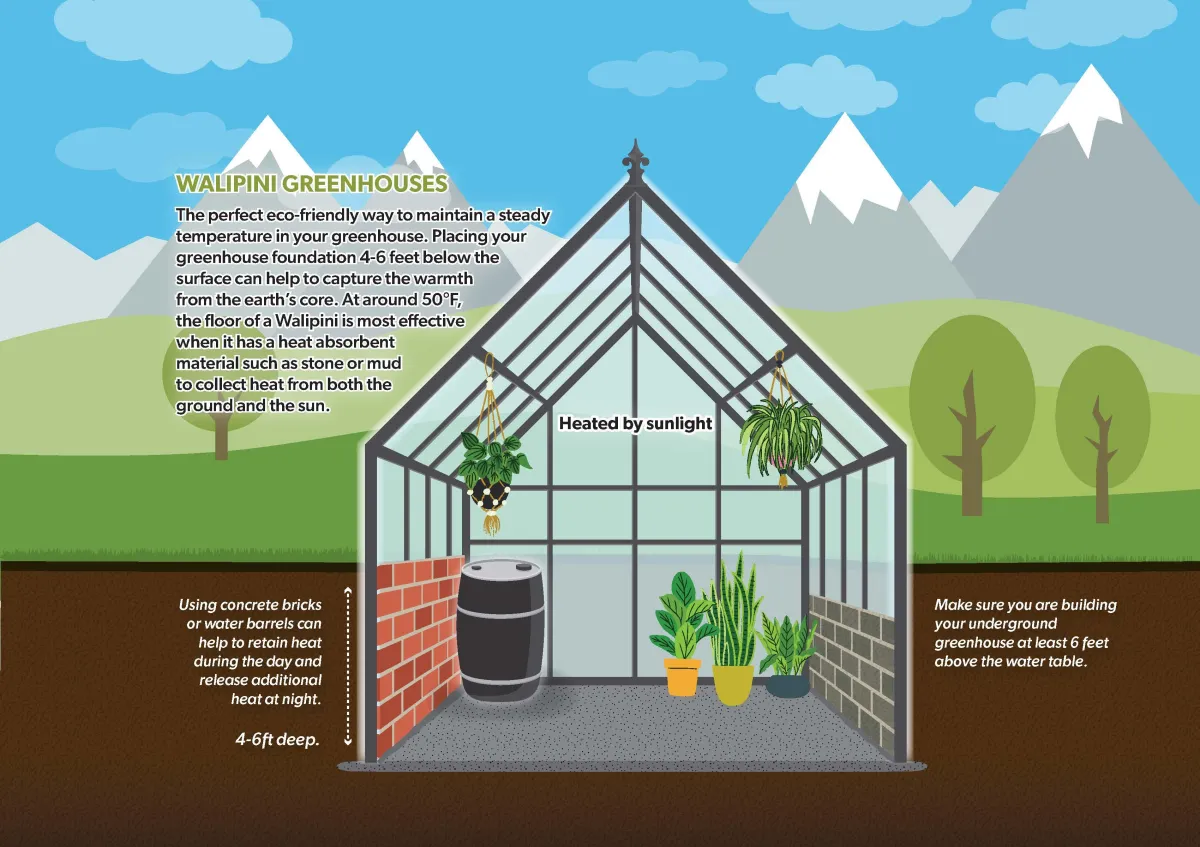
Build an Underground Greenhouse (Walipini): For Year-Round Growing
Build an Underground Greenhouse (Walipini): For Year-Round Growing
Building an underground greenhouse, also known as a walipini, in colder climates offers several benefits, including extending the growing season, providing protection from harsh weather conditions, and reducing heating costs. Here's how to build one and its benefits:

Materials Needed:
Excavation equipment (such as a backhoe)
Wood, metal, or concrete for framing
Transparent roofing material (such as polycarbonate panels or greenhouse plastic)
Insulation (such as foam board or straw bales)
Gravel or crushed stone for drainage
Soil for backfilling


Step-by-Step Construction:
Site Selection: Choose a location for your underground greenhouse that receives ample sunlight and is relatively flat. Ideally, it should be situated on a south-facing slope to maximize solar exposure.
Excavation: Dig a trench or pit that is several feet deep, depending on the desired size and depth of your greenhouse. The trench should be wide enough to accommodate the greenhouse structure and provide space for planting beds.
Framing: Construct a frame for the greenhouse using wood, metal, or concrete. The frame should be sturdy enough to support the weight of the roofing material and provide structural integrity.
Roofing: Install transparent roofing material over the frame to allow sunlight to penetrate into the greenhouse. Polycarbonate panels or greenhouse plastic are commonly used for this purpose. Ensure that the roofing material is securely fastened and sealed to prevent leaks.
Insulation: Line the walls and floor of the greenhouse with insulation to help regulate temperature and protect plants from freezing temperatures. Foam board insulation or straw bales can be used for this purpose. Insulate the north-facing wall and any exposed areas to minimize heat loss.
Drainage: Create a drainage system to prevent water from pooling inside the greenhouse. Install a layer of gravel or crushed stone at the bottom of the trench for drainage, and slope the floor slightly towards a central drain or sump pit.
Backfilling: Backfill the excavated soil around the greenhouse walls to provide additional insulation and stability. Compact the soil gently to ensure adequate support for the structure.
Ventilation and Access: Install vents or windows in the roof or walls of the greenhouse to allow for airflow and temperature regulation. Provide a door or entrance for easy access to the greenhouse.




Benefits of an Underground Greenhouse:
Extended Growing Season: The thermal mass of the earth helps to regulate temperature inside the greenhouse, allowing for year-round cultivation of crops even in colder climates.
Protection from Extreme Weather: The underground structure provides natural insulation and protection from frost, wind, hail, and other harsh weather conditions.
Energy Efficiency: By harnessing solar energy and taking advantage of natural insulation, underground greenhouses require minimal heating and cooling, resulting in lower energy costs.
Increased Crop Diversity: The controlled environment of the greenhouse allows for the cultivation of a wide variety of crops that may not thrive in outdoor conditions.
Sustainability: Underground greenhouses utilize natural resources and passive solar heating techniques, making them an environmentally friendly option for food production.
Building an underground greenhouse requires careful planning and construction, but the benefits of extended growing seasons, protection from harsh weather, and energy efficiency make it a worthwhile investment for gardeners in colder climates.
